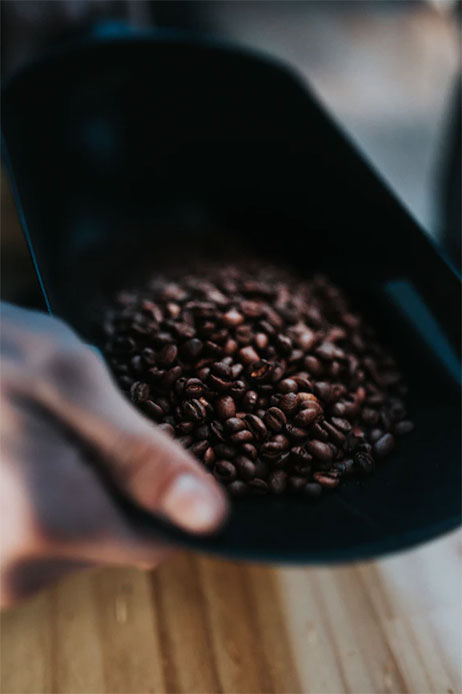Four Unusual Coffee Processing Methods

Coffees that are out of the ordinary.
Until coffee reaches our cup, it has gone through several stages, each of which has its own share in shaping its aromas and taste. Coffee processing is one of them. By processing, we mean essentially the method of removing the coffee bean from the fruit, which can be done in various ways, while at the same stage we include any other process used by coffee producers during the period when the coffee bean is still green, that is, unbaked.
Most coffee lovers know the basic methods of coffee processing, namely the wet method (washed), the natural method (natural) and the hybrid Pulp Natural, which combines elements of the two basic methods. In the wet method, the coffee cherries are mashed and the beans, still covered by the flesh of the fruit, ripen in water tanks, before the final removal of the fruit residues, while in the natural method the fruits are dried in the sun, and the dehydrated flesh is removed. later. In the Pulp Natural hybrid method, the granules are first "washed" and then dried in the sun.
But beyond these widespread processing methods, human ingenuity, the unique conditions of each region, but also the increased demand for special flavors have given birth to or have brought to the fore separate coffee processing methods, with unique results. Let's get to know them better!
Four Unusual Coffee Processing Methods
 Monsooned Coffee: This is a processing method found mainly in the coastal areas of India. The coffee beans, after drying in the sun, are left exposed to the hot and humid winds of the area, the monsoons. Temperature and humidity ripen the grains, which take on a golden yellow color instead of the usual green. Usually, monsooned coffees have a strong body, minimal acidity and taste profile with strong notes of spices and nuts. The technique has its roots in the time when India was the possession of the British Empire, and overproduction of coffee led to the stacking of beans in warehouses near ports, before making their way to Europe. Today, it is a method of producing high quality coffee, which has a fanatical audience around the world. We can try the India Monsooned Karnataka of Caffe Lab or the excellent India Monsooned of New York, in order to realize the special taste of the Asian winds in our cup.
Monsooned Coffee: This is a processing method found mainly in the coastal areas of India. The coffee beans, after drying in the sun, are left exposed to the hot and humid winds of the area, the monsoons. Temperature and humidity ripen the grains, which take on a golden yellow color instead of the usual green. Usually, monsooned coffees have a strong body, minimal acidity and taste profile with strong notes of spices and nuts. The technique has its roots in the time when India was the possession of the British Empire, and overproduction of coffee led to the stacking of beans in warehouses near ports, before making their way to Europe. Today, it is a method of producing high quality coffee, which has a fanatical audience around the world. We can try the India Monsooned Karnataka of Caffe Lab or the excellent India Monsooned of New York, in order to realize the special taste of the Asian winds in our cup.
Barrique Fermentation: What happens if we let the beans ripen in a barrel, as we would with a rum or whiskey? Barrique Fermentation (barrel fermentation) is a technique according to which green coffee is matured for months in empty barrels, in order to absorb the aromas of the drink, the barrel and the aging. The taste effect varies depending on many parameters, but usually the results are excellent, as the coffee acquires excellent taste depth and unique aftertaste. In Colombia, at the Finca San Jose plantation, coffee matures for three to four months in Colombian rum oak barrels, resulting in a unique coffee, available for testing by the Caffe Lab, as Colombia Rum Fermentation.
Frozen Natural, coffee from the freezer: This is an experimental technique, in which the ripe coffee beans are put in a deep freezer mode for 24 hours, and then the flesh is removed by the natural method. Those who follow this method, claim that coffee sweetens significantly, its bitterness disappears and the aromas of red fruits are emphasized. Small plantations in Central American countries, such as Panama and El Salvador, are investing in this method of producing specialty coffees, and it may be something we will be even more concerned about in the future.
Aged coffee, an idea from the past: The coffee that our great-grandparents drank was ... aged of course, since the journey by ship was long and the coffee matured for a long time in the barns or warehouses. This taste profile was so special that it is reported that with the opening of the Suez Canal, there were many who complained about the different, and essentially fresher coffee. Today, in several Asian countries, aging is intentional, and unroasted coffee is left to ripen for intervals of up to three years. The result is an earthy coffee, with a strong body of notes of wood, smoke and spices.
Coffee is magic: whether it is rained by the winds of India, whether it matures in a barrel of rum, whether it cools or just waits patiently for a few years, its taste will always be unique!








